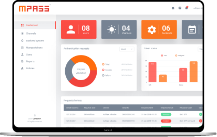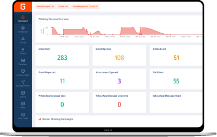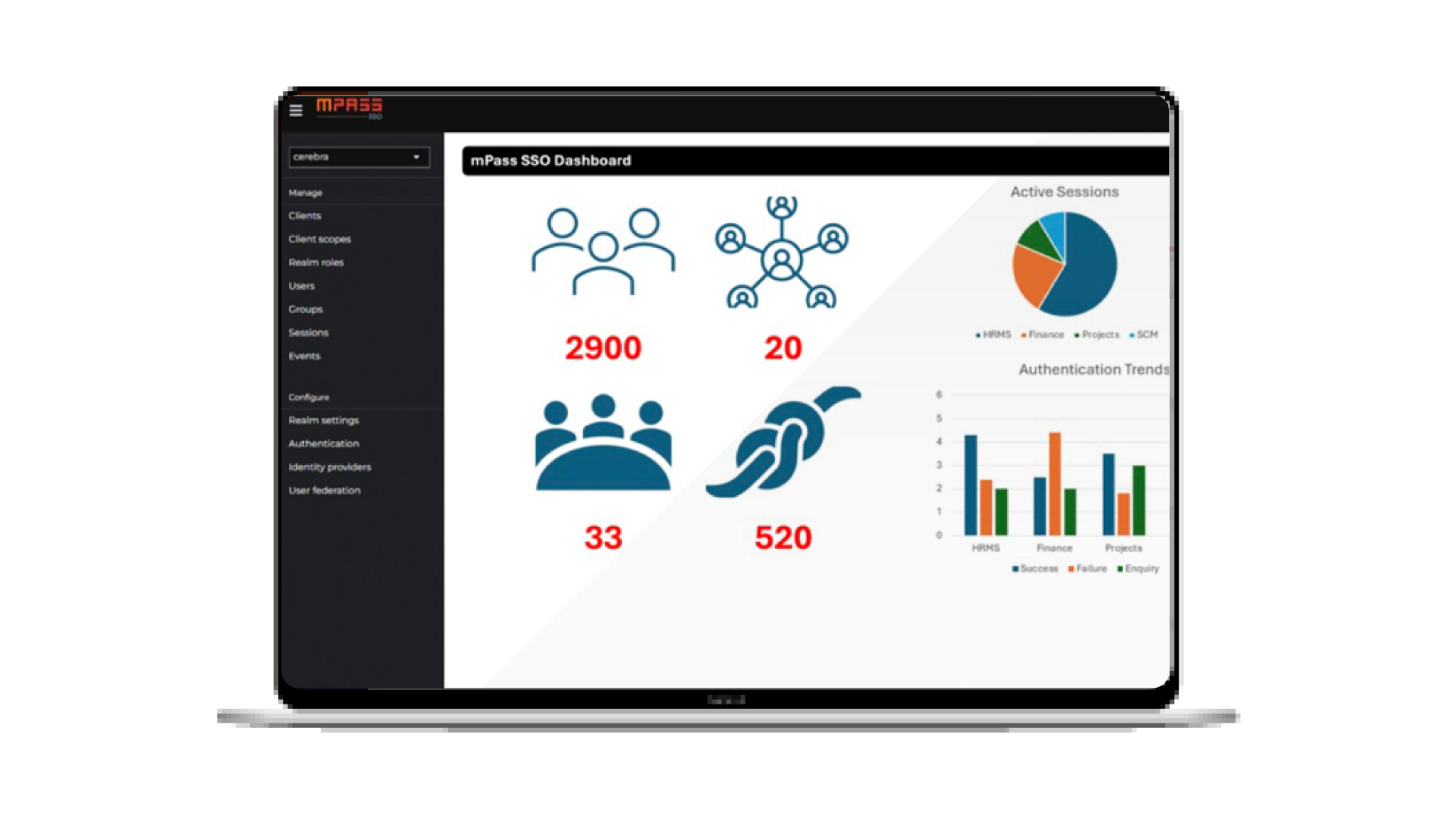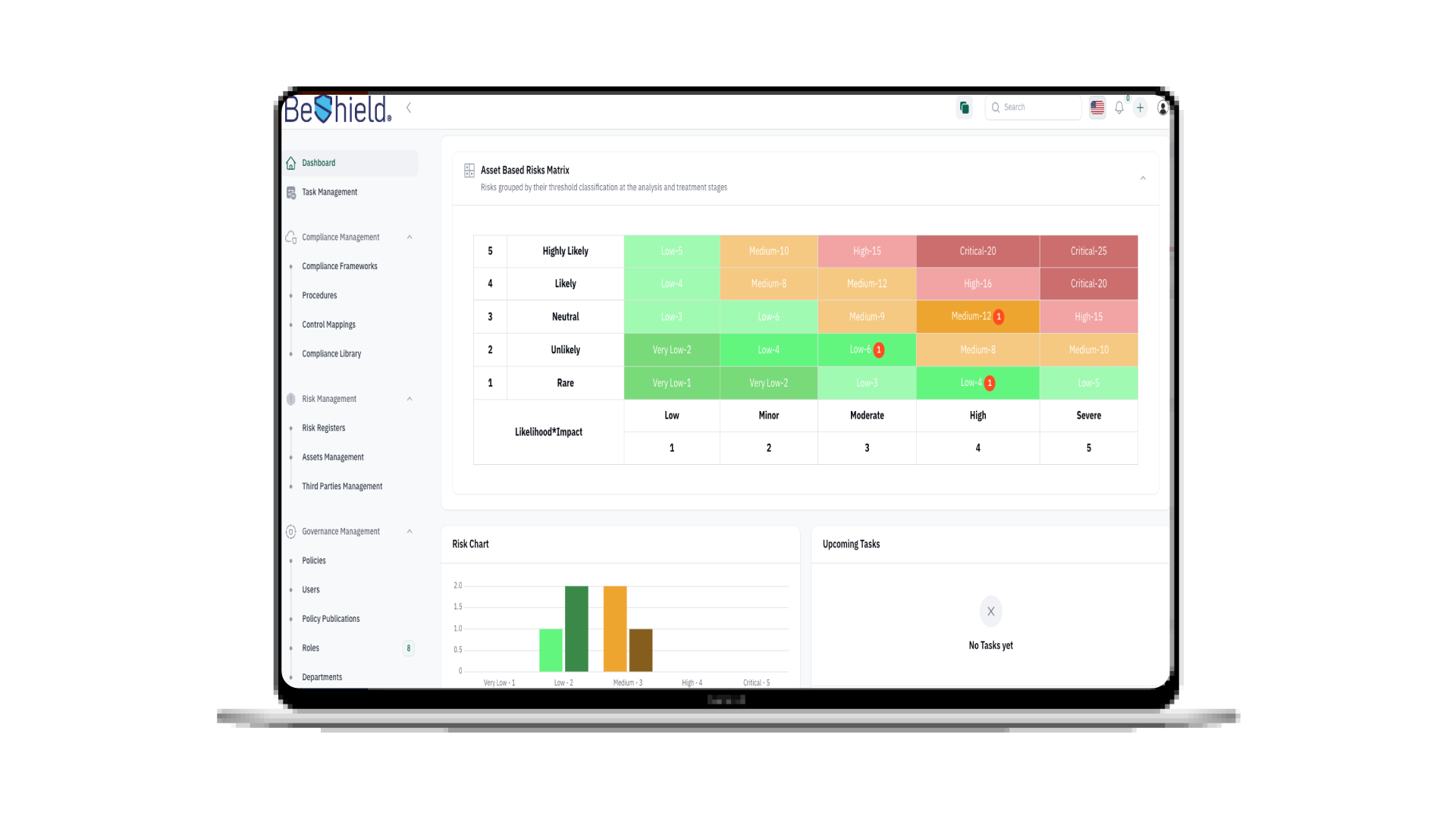Cyber-attacks come in a variety of formats and with the advancement of technology it continues to improve. Phishing is a common type of cyber-attack used by cyber criminals, and according to Proofpoint’s threat report, 75% of organizations experienced a Phishing attack and receive a Phishing Email in 2020 (Proofpoint 2021 state of the Phish report).
Best Ways to Identify a Phishing Email
Cyber criminals found a higher success rate in achieving their goals thorough email phishing rather than any other approach. This is due to the lack of awareness and knowledge on how to identify legitimate emails from fake ones. There are many ways that could help organizations in decreasing the numbers of successful phishing attacks and educating their employees on this topic is one of them. Being able to spot a phishing email is very helpful to achieve that goal.

So, what are phishing emails and how do you spot them?
What is Phishing & Phishing email?
First, we must define phishing, phishing is a malicious method used by cyber criminals to collect confidential data from users. The attackers pose as a trustworthy individual or organization in order to get the victims to trust them and disclose their personal information.
Phishing attacks may be used for financial extortion, identity theft, and gaining unauthorized access to the victim’s account. Email phishing is one form of phishing used by cyber criminals.
Unfortunately, 96% of cyber-attacks are delivered through email (Verizon 2020 Data Breach Investigations report).
One way cyber criminals can attack: A cybercriminal sends a phishing email to a victim, when the unsuspecting individual opens the email and clicks any link or downloads any attachment within the email, malicious malwares or key loggers are downloaded onto the users device and begin stealing the users information and could possibly spread to other users on the network!
Cyber criminals use eye catching words such as Urgent! Attention! Important! this way they insure they grasp their victim’s attention and entice them into clicking on malicious links or opening malicious files.
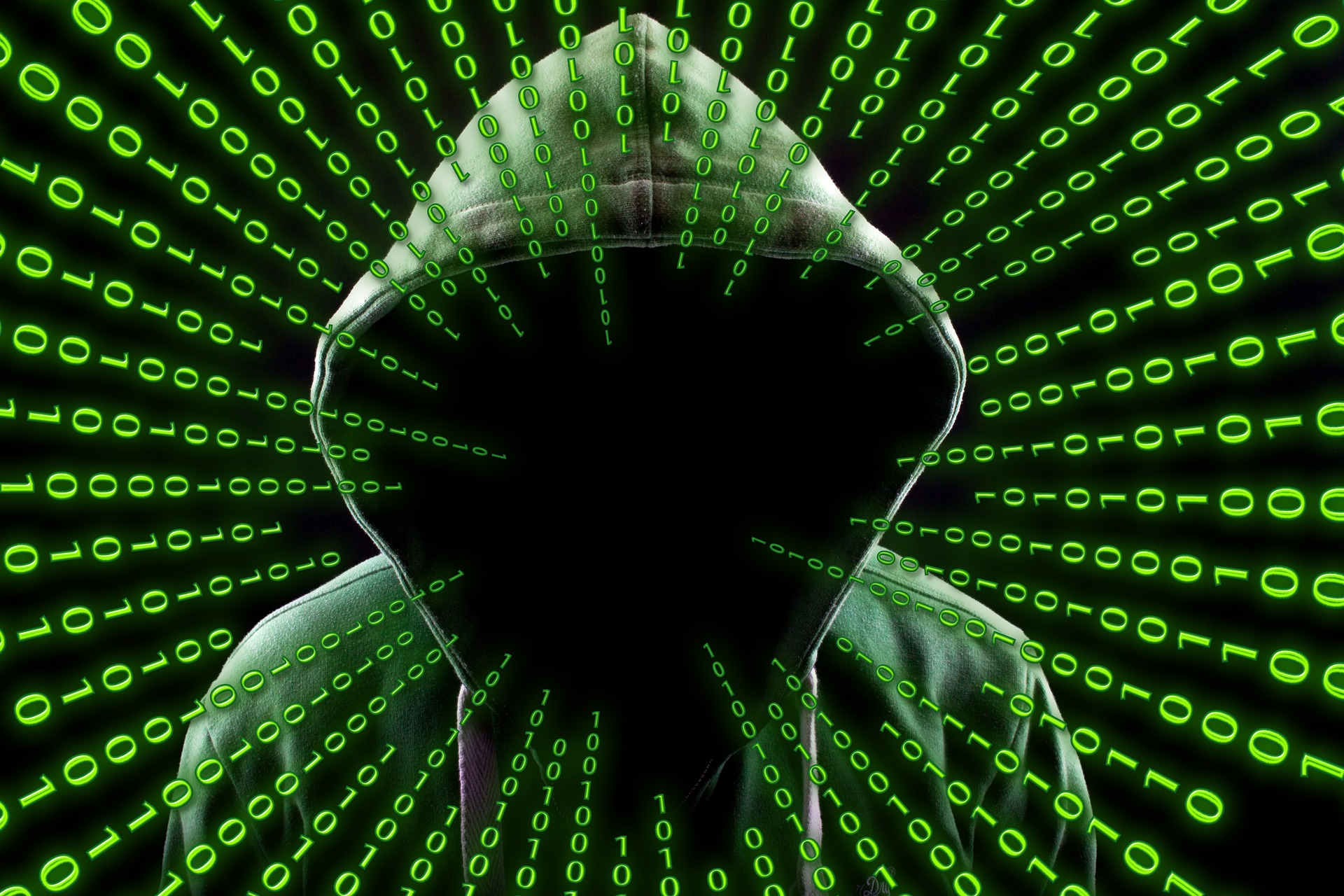
Especially, with the recent global pandemic they know what society is looking out for, which is constant updates.
Therefore, the number of people who got hacked skyrocketed in this period. Many suffered from this and exposed their personal, financial, and medical data, in particular organizations. Last year, the number of business email compromise (BEC) attempts witnessed a significant 15% increase (Abnormal Security 2020 Quarterly Q3 BEC report). This proves the importance of educating your employees on how to be alert and distinguish phishing emails from authentic ones.
But how could you spot a malicious email from the hundreds you receive? Listed below are the top 5 ways to do so and which could help you avert future troubles.
5 Ways to Identify a Phishing Email
1- ALWAYS check the sender domain before interacting with the email. This is one of the easiest giveaways to the hacker’s scheme. If the email is truly from your bank, then you would receive it from a private domain not a public one such as @gmail.com or @hotmail.com.
2- Spelling mistakes and grammatical error are evident in phishing emails. When an organization sends out an official email to its employees or customers they run it through a spell-checking tool to verify before sending. Which is why, when you see multiple errors in an email do not overlook it as simple mistakes, instead take it as a sign to not interact with it any further.
3- In phishing emails, malicious links and attachments are a staple. This way when you click on them you singlehandedly corrupted your cyber privacy. These attachments download malwares that can hack into your system and steal your personal data. So, do not be hasty on clicking anything until you determine the authenticity of it.
4- When you receive an email stating you won a prize or free subscription to something you never interacted with or visited, that can indicate the legitimacy of the sender. Also, when you start receiving newsletters for something you did not sign up for then it is a high chance of it being a phishing email.
5- Cyber criminals will most likely try to scare the victim into providing them the information they need by sending an important email that required immediate action for example it can be an email disguised as their bank or place of work, they do so by stating “Warning! Account will be closed if not…” and etc. This will urge the recipient in following the warnings afraid of any damage without thoroughly looking through the email checking for potential flaws.
Bonus: You could also implement a phishing simulation solution such as PhishGuard that trains your employees specifically about one of the most fundamental security threats, and to educate users on how to respond to the growing phishing security risks! PhishGuard also enables periodic assessment, measurement, and monitoring of your employees’ readiness to detect phishing scams.
In Conclusion
Email phishing is one of the many ways to be taken advantage online, but after educating yourself around this topic, this could help in reducing the chances of being a future victim to this type of attack. Always be cautious when opening and interacting with any email you receive. This could spare you from future inconveniences.
Think, before you click!
Share this article:
Popular
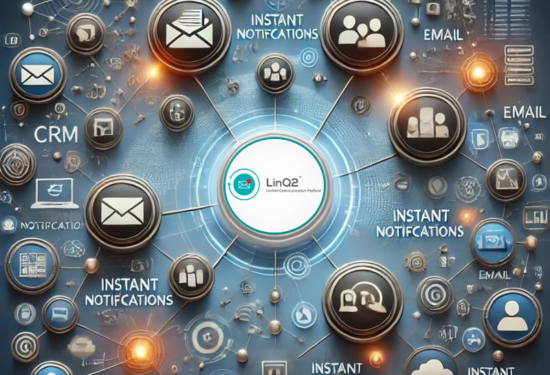
Revolutionize Enterprise Communication Platform with LinQ2
Revolutionize Enterprise Communication Platform with LinQ2 In today’s fast-paced business environment, enterprise communication platform is the backbone of success. Whether reaching customers, coordinating with employees, or automating notifications, having an effective enterprise communication platform is essential. Cerebra’s LinQ2 stands out as the ultimate solution, offering a multi-channel notification platform tailored for businesses of all sizes. Why Enterprise Communication Platform Is Essential for Business Growth? Efficient enterprise communication platform ensures businesses can stay connected with their customers and teams in real time. Poor communication systems often lead to missed opportunities, customer dissatisfaction, and delays in internal operations. Key Features of LinQ2 ...
11th Mar 2025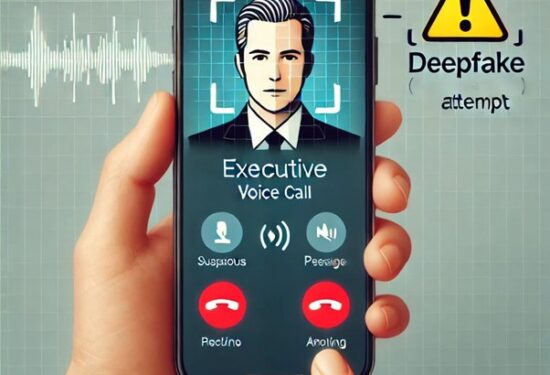
Deepfake in Phishing: Challenges and Solutions
In the era of advanced technologies, especially with the explosive adoption of Large Language Models (LLMs) and Generative Artificial Intelligence (GenAI), deepfake has emerged as one of the most significant challenges in cybersecurity. This technology relies on Artificial Intelligence, specifically deep learning and the use of GenAI, to create fake yet highly realistic content that is difficult to detect. Deepfake serves as a versatile tool spanning applications from entertainment to cybersecurity. However, its misuse can pose severe risks, especially in phishing schemes. What is Deepfake? Synthetic media refers to a technology that leverages deep learning algorithms to create ...
19th Dec 2024
AI Governance: Opportunities and Challenges in Cybersecurity
AI Governance: Opportunities and Challenges in Cybersecurity With the increasing reliance on AI technologies in various fields, AI Governance has become a key factor to ensure system integrity and data protection. This governance plays an essential role in enhancing confidence in modern technology and ensuring that it is used responsibly. It has been almost two years since OpenAI’s ChatGPT went viral, igniting widespread interest in artificial intelligence (AI) and setting off a wave of technological and investment growth in the field. Academic and technical investments in artificial intelligence: The advancements in AI since then have been staggering, with exponential increases ...
14th Nov 2024
Cyber Warfare Unveiled: Tracing the Journey from Espionage to Digital Combat
“Cyber Warfare: From Espionage to War A Journey Through Time” With the massive technological advancements, the boundaries of warfare have expanded to encompass cyberspace, where “cyber warfare” has emerged as an increasingly serious threat to individuals, institutions, and countries. The line between cyber and traditional wars has blurred for a while but recent activities in the region made it clear that cyberwars is becoming a dangerous and can lead to harming humans. In this blog, we will dive into a journey through the world of cyber warfare, seeking to understand its nature, history, impacts, types, evolution, and some solutions to ...
9th Oct 2024
Keeping Our Kids Safe Online
A Guide For Keeping Your Kids Safe Online Parents and all who are concerned about the well-being of our young kids in this digital world. Today we will discuss a topic of utmost importance: digital safety for kids. Yes, the Internet can be a very dangerous place for our young kids , especially with the spread of phishing scams. So, let us dive deeper and present to you, in this comprehensive article, a comprehensive guide on digital safety for kids. What every parent needs to pay attention to. Internet risks for kids: The internet has become a big part of ...
17th Jul 2024
Could you be hacked through Slack?
Could you be hacked through Slack? The usage of collaboration platforms such as Microsoft Teams and Slack has significantly increased, with nearly 80% of employees utilizing them. These platforms are designed to be convenient and easily manageable for daily conversations within organizations. However, what makes them easy and convenient also renders them vulnerable to cyber threats and attacks. In 2021, for instance, 780 gigabytes of data from the gaming giant Electronic Arts (EA) were breached through Slack! During the same year, a security vulnerability in Microsoft Teams was exploited to launch a widespread cyber attack on ...
12th Jun 2024
Tips To Be Cyber Protected While Traveling
Goodbye worry! A safe journey in the digital world With all the modern wonders of the digital world, we trust communication technologies on our journeys. There is no doubt that the travel experience is always more beautiful and enjoyable, but it can also pose a range of risks, especially when it comes to cybersecurity. Travelers may fall victim to phishing, Wi-Fi network spying, and theft of their personal data, which can make their journey filled with worries and tension. With the increasing prevalence of cyber threats, it is essential for travelers to follow some guidelines to protect their devices and ...
1st Apr 2024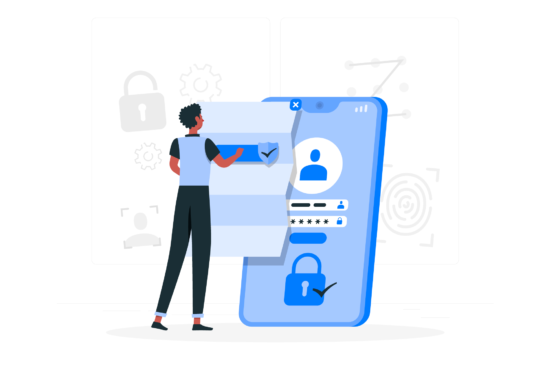
Push Authentication: A New Era in Multi-Factor Authentication
Want To Say Goodbye To Passwords and OTP Codes? Discover Push Authentication! It is easy for your password to be compromised through phishing attacks, even if it meets the cybersecurity strong password standards and is difficult to predict So we must get to know the technique of Push based Authentication. Some may recommend that you use Multi-Factor Authentication (MFA) to increase your security. Multi-Factor Authentication (MFA): MFA is the process of logging into your account through multiple steps. It requires you to enter more information, not just your password. But there is another obstacle that arises when using such ...
14th Feb 2024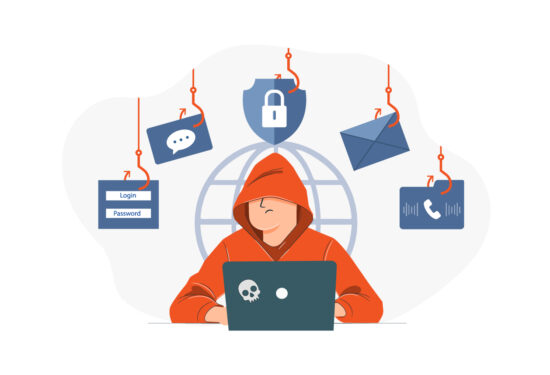
The Difference Between Phishing Attacks
The Difference Between Phishing Attacks Phishing attacks are harmful attacks used by criminals to steal personal and financial information from individuals and businesses. Attacks on individuals and businesses are becoming more common as we use the internet and technology more often in our daily lives. Phishing attacks involve the use of dishonesty and fraudulent methods to fool consumers into believing they are interacting with the trustworthiness of an unsuspecting destination, such as banks, email companies, or social media platforms. But what is the difference between phishing attacks? How can individuals and organizations protect themselves from such attacks? That is what ...
17th Jul 2023

